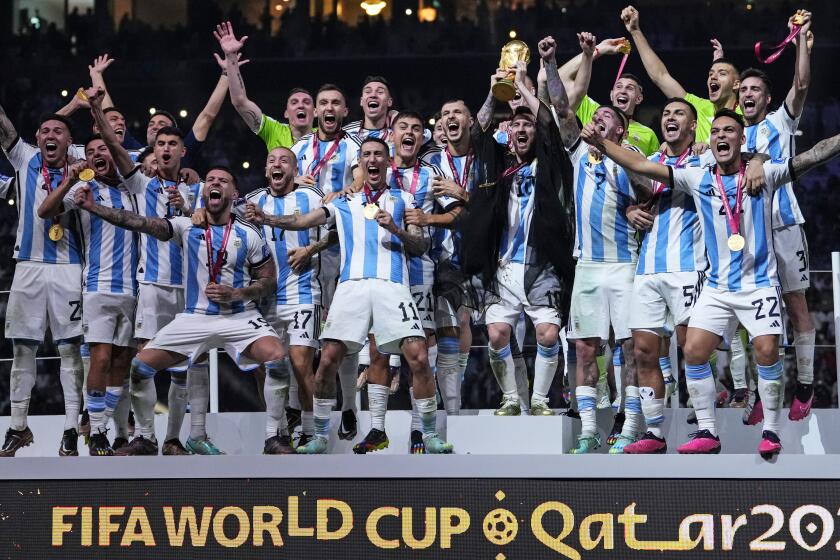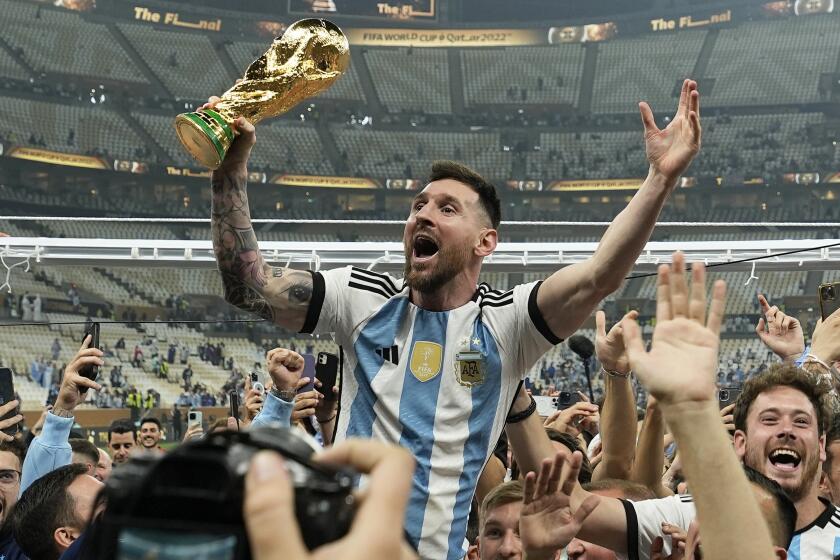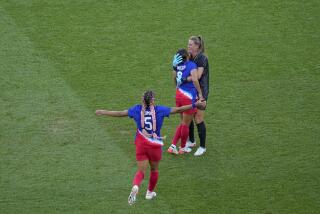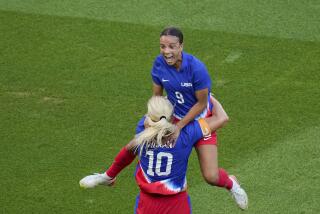Equal pay is just the start. Cindy Parlow Cone has ambitious goals for U.S. Soccer
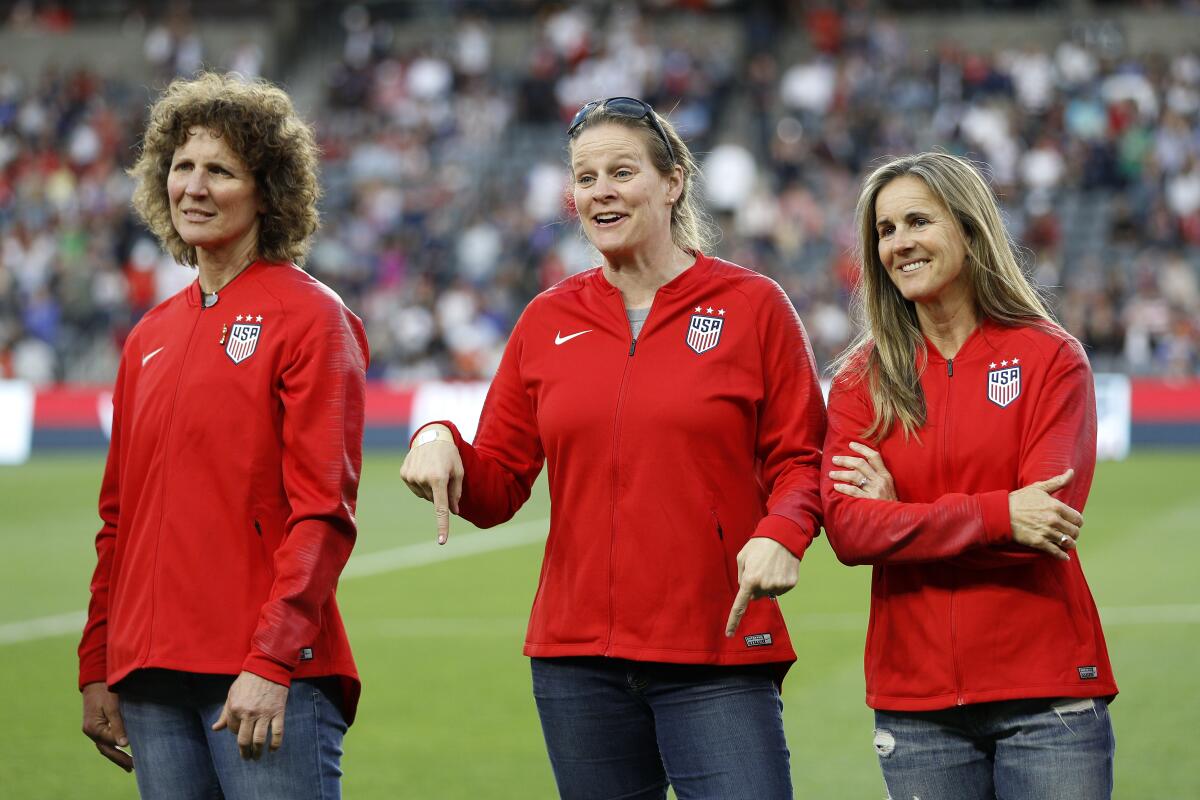
There are several things that make Cindy Parlow Cone, the president of U.S. Soccer, stand out among the sport’s top executives.
She’s a former World Cup champion and two-time Olympic gold medalist who made 158 international appearances. She was inducted in the National Soccer Hall of Fame and coached the Portland Thorns to a league title in the NWSL’s inaugural season. She’s a volunteer, running one of the world’s largest, richest and most complex soccer federations for free.
Then there’s her gender: Of the 211 national federations that belong to FIFA, only nine have female presidents. Yet lost among all those significant and rare accomplishments is the fact that Cone’s short reign has arguably been among the most impactful of any U.S. Soccer president.
“When you put a woman at the table,” said Julie Foudy, a former teammate, “they get s— done.”
Maybe. But Cone, the only woman president in U.S. Soccer’s 109-year history, would prefer to think her talents and life experiences have more to do with her success than her gender or playing career.
Now that the 2022 World Cup in Qatar is over, the focus turns to 2026 and the World Cup’s return to North America. What are the logistical challenges that await?
“Is it because I’m a woman? Is it because I’m a former player? Is it because of my leadership style?” Cone asked after appearing as one of the keynote speakers at November’s ESPN W conference in Ojai. “I don’t know. I am who I am. And I don’t try to be any other way.
“For me, one of the most important things is stay true to myself and stay true to who I am as a person so that I can sleep well at night.”
She should sleep like a baby considering what she has achieved since becoming federation president in 2020, the day before President Trump declared COVID-19 a federal emergency.
Cone — one of the youngest federation presidents in the world at 44 — led U.S. Soccer into and out of the unprecedented coronavirus crisis and oversaw a men’s national team program that won a Gold Cup, the first CONCACAF Nations League, returned to the World Cup after an eight-year absence and qualified for the Olympics for the first time since 2008. The women’s team, ranked No. 1 in the world, earned bronze at the Tokyo Games and won the CONCACAF W Championship, qualifying for next summer’s Women’s World Cup and the 2024 Paris Olympics. Cone also commissioned the groundbreaking Yates Report, which documented systematic abuse in women’s soccer in the U.S. from the youth level through the NWSL, abuse previous leaders knew about but did little to correct.
Her crowning accomplishment, however, was negotiating historic collective-bargaining agreements with both national teams that made the U.S. the first country to achieve gender equality, a goal that U.S. Soccer’s past two presidents pursued but never achieved.
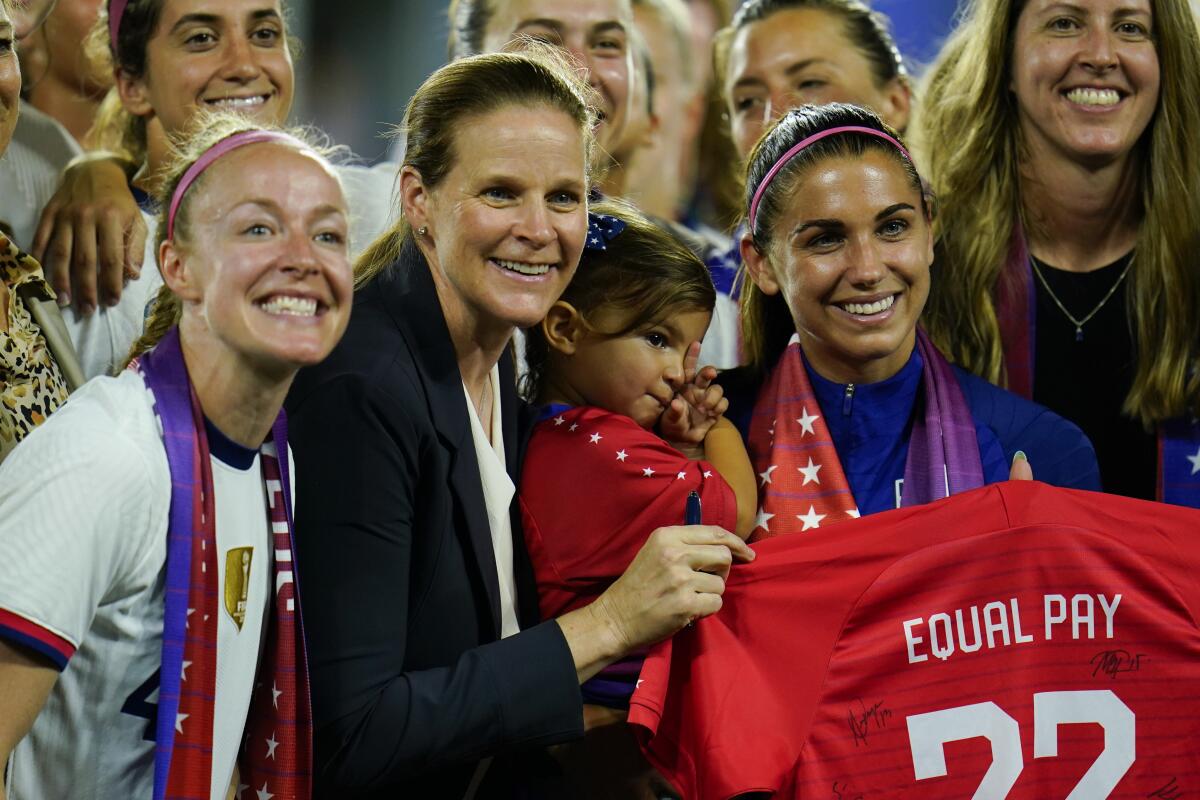
“She’s a former athlete, she cares about the sport deeply, she cares about national teams deeply and she cares about environments deeply. And with that she makes choices. Simple as that,” Earnie Stewart, a three-time World Cup player and now U.S. Soccer’s sporting director, said when asked what makes Cone effective. “She’s straightforward. When she makes a decision, she stands by it and she goes forward.”
She also trusts those like Stewart who work under her.
“If you don’t, why hire people?” she asked. “You’re not going to empower them to do the work. I’m a team player. No one wants to be micromanaged.”
Asked whether her gender influenced Cone’s approach, Stewart was as straightforward as his boss.
“I’m a male, so I can’t totally answer that question,” he said. “I certainly hope not. I believe that the world has evolved.”
There’s little doubt that the women who have earned a seat at the table in what has traditionally been a male-dominated sport are making a difference. Shortly after former Norwegian international player Lise Klaveness became the first woman to head that country’s soccer federation, she negotiated a truce that returned Ada Hegerberg, a former Ballon d’Or winner and onetime teammate of Klaveness, to the national team following a five-year boycott. Klaveness has also been among the most outspoken critics of FIFA’s indifference toward the treatment of migrant workers in Qatar, site of the just-concluded World Cup.
“I’m not surprised at all by how well she’s doing.”
— Julie Foudy, U.S. women’s soccer legend
Cone was the federation’s vice president when Carlos Cordeiro resigned as chief executive, taking responsibility for demeaning language included in a legal brief issued by federation lawyers in a gender equity lawsuit brought against U.S. Soccer by members of the women’s national team. That gave Cone the reins; she was then elected to her own four-year term in March of this year, defeating Cordeiro on the first ballot.
The job doesn’t get any easier over time. Cone, who is responsible for more than a dozen national teams and a staff of 250, must now oversee preparations for the largest, most complex World Cup in history. The 2026 tournament will include a record 48 teams playing in the U.S., Canada and Mexico, but 60 of the 80 matches will be staged in the U.S., spread across 11 cities and four time zones.
Foudy, who won a World Cup and three Olympic medals alongside Cone, is among those confident she can handle it.
“I’m not surprised at all by how well she’s doing,” she said. “There’s no bull—. It’s very transparent. Her moral compass is fantastic. She’s willing to be vulnerable, she’s willing to admit what she’s doesn’t know. Yet she’s really good at making decisions when she does know or asking for help when she needs it.
“All those things make great leaders. She checks all the boxes.”
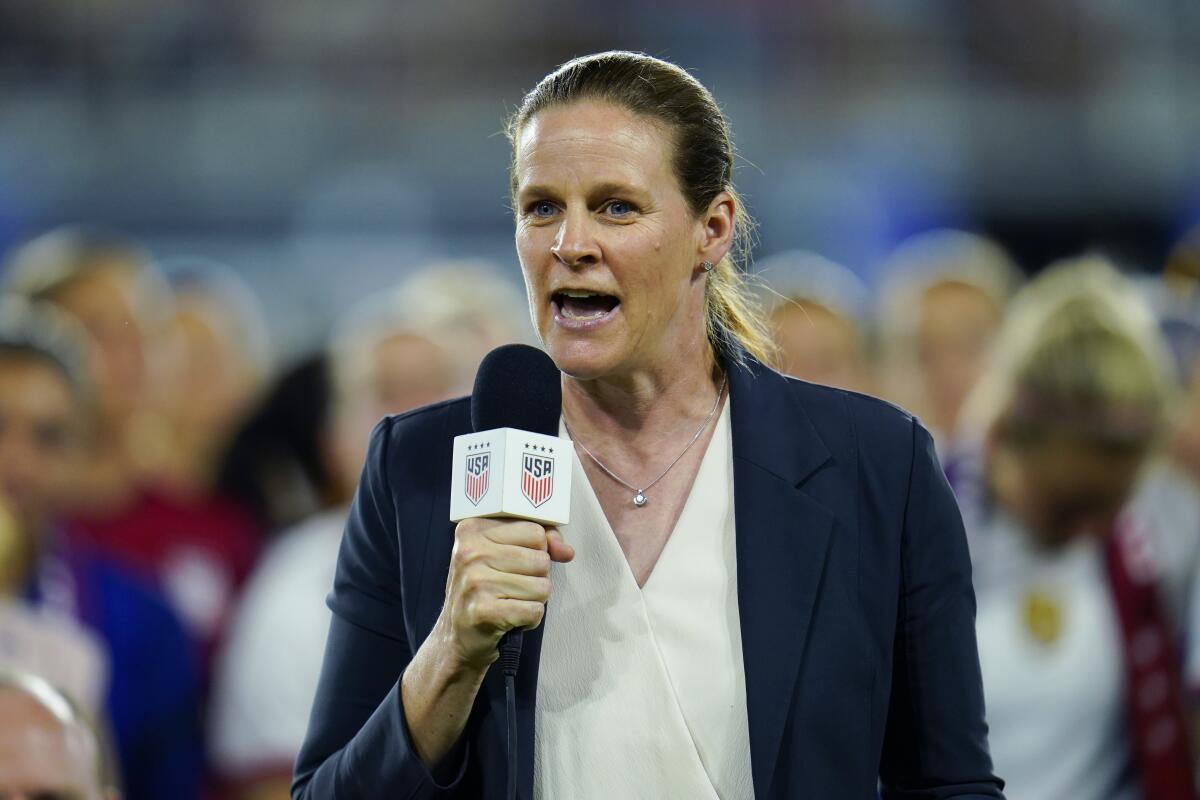
Yet the gender question remains. Because the breakthrough agreement on pay equity and the stunning revelations contained in the Yates Report largely have been seen as benefiting the women’s game, Cone’s administration has been viewed in some circles as furthering an agenda she held as an activist player and later as an NWSL coach who pushed back against sexual harassment.
That criticism is both unjust and incorrect. Unequal pay and sexual harassment were never a male-female problem, they have always been a soccer problem. Cone is quick to credit the men’s team with helping solve it.
“It’s been over two decades that I’ve been involved in the equal-pay fight,” said Cone, who, after winning the 1999 Women’s World Cup, joined Foudy, Mia Hamm and a handful of others in refusing to play until they received better compensation and working conditions. “To make the progress that we’ve made, it took a lot of things to come together. I give huge credit to the men’s national and their [union] to get on board with this and to really be a part of the solution.”
Still, it was Cone who forced the issue. With the collective bargaining agreements for both the men’s and women’s teams being negotiated at the same time last spring, she brought both sides to the table and refused to endorse any deal without an agreement on FIFA prize money. The result was historic: both teams would place their winnings in one pot and split the money equally.
“I was kind of on the outside, frustrated with different things, even angry with certain things. And I realized that unless I was willing to jump in and work, I couldn’t keep complaining or keep getting frustrated.”
— Cindy Parlow Cone, on why she pursued the U.S. Soccer presidency
With the men reaching the final 16 of the Qatar World Cup, that meant the teams split the $11.7 million in prize money evenly. The $5.85 million the women got nearly matched the $6 million in combined earnings for winning the last two Women’s World Cups.
Cone has been deeply invested in the investigations in misconduct in the NWSL, both the Yates probe, commissioned by U.S. Soccer, and the recently released report from the league and its players’ associations. The reports were damning both in what they uncovered and in the detail in which it was described. Cone is less interested in the problems than she is in the solutions.
“What I was most looking forward to are the recommendations,” said Cone, who has already implemented many of those contained in the Yates Report. “As hard as it is to read both reports, for me, my guiding light is ‘OK, now we have pathway out and [for] how we start to change it and make sure that our game is as safe as possible.’ And hopefully, that this never happens again.
Lionel Messi found redemption, leading Argentina to its first World Cup victory in 36 years during a Qatar tournament that often stepped into controversy.
“I’m glad the report’s out now so we can really focus on making the systemic changes that we need to make.”
So while nothing Cone has done was accomplished because she’s a woman she does bring an additional awareness to the job of what it feels like to be marginalized, ignored or dismissed. The 2026 World Cup isn’t the first in North America since 1994, she corrects; there have been three Women’s World Cups played here since then. Pushing grassroots soccer isn’t about getting boys to play the game, she emphasizes, it’s about getting boys and girls to play the game.
Language and context matter.
“Why women are successful when they’re given these leadership positions is that they bring empathy and instincts and an understanding and a willingness,” said Foudy, a former president of the Women’s Sports Foundation. “The skill set that women bring to the table is huge and enormous.”
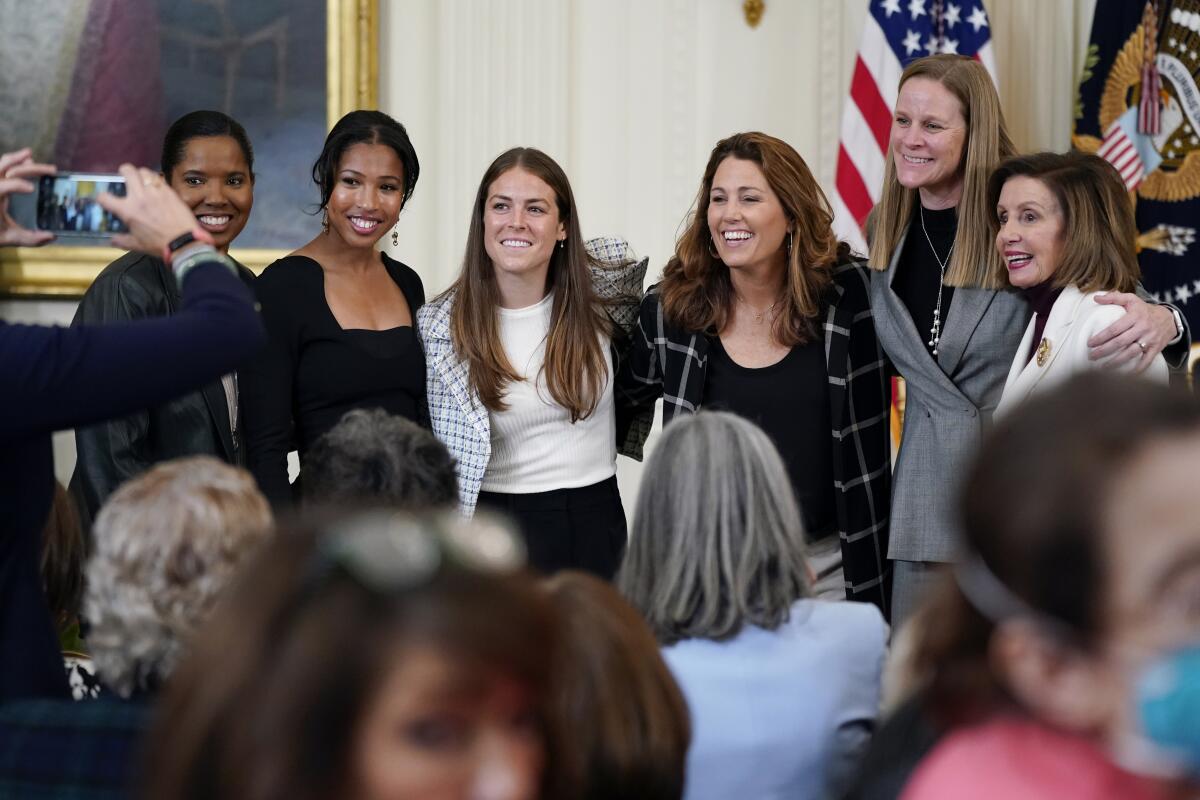
The challenge Cone faces now is to not only unite and repair U.S. Soccer on the national team and professional levels, but at the grassroots as well. And that’s a big lift. More than 12.6 million Americans played outdoor soccer at least once in 2021, according to Statista. That’s more than the registered number of players in Germany, France, Spain and the Netherlands combined.
The future of the game in the U.S. is about planting seeds, which is why Cone, in addition to being president of U.S. Soccer, is also a director for a youth soccer club in North Carolina, where her duties include ordering uniforms for all the players because somebody has to order them.
That desire to roll up her sleeves and do what has to be done is what led her to the highest job in the sport in the U.S., but it hasn’t stopped her from pitching in at lowest levels as well.
“I truly, deeply care about the sport, from the grassroots level all the way up,” Cone said. “I was kind of on the outside, frustrated with different things, even angry with certain things. And I realized that unless I was willing to jump in and work, I couldn’t keep complaining or keep getting frustrated.
“I was never looking to become vice-president or even president of U.S. Soccer. I think it all kind of happened by accident. But now that I’m here I’m seeing that I’m able to make positive change.”

